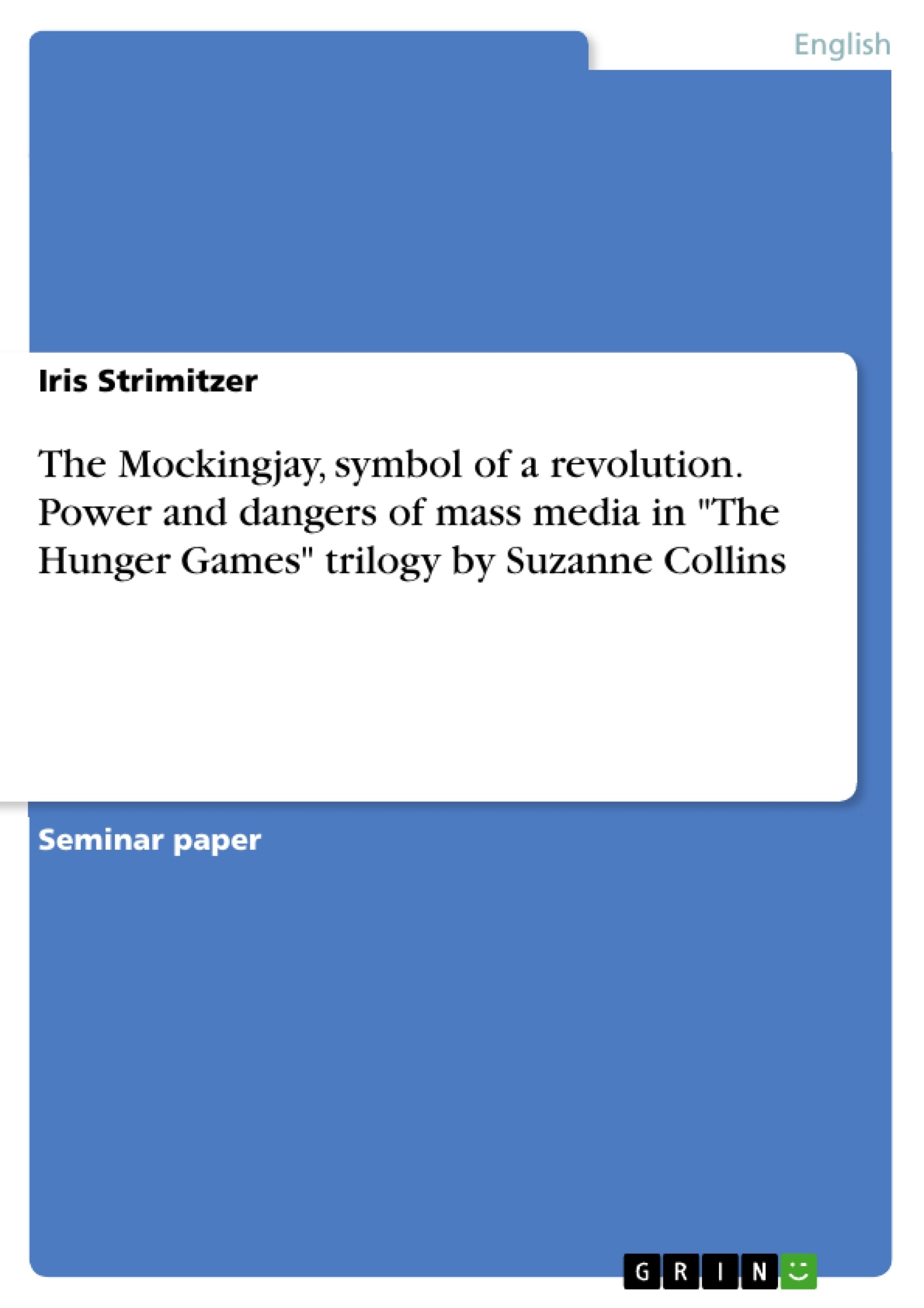This paper is concerned with one of the most preeminent motifs in Suzanne Collins’ "The Hunger Games" trilogy. It poses the question why the use of mass media plays such a dominant role throughout all three novels. The aim of this thesis is to demonstrate that mass media functions as a powerful tool to control, manipulate, and ultimately, free the population of the fictional state Panem.
It will show that mass media is one of the most essential components of the novels that drives the story development and significantly contributes to the storyline’s arc of suspense. Also, it will examine the reoccurring symbol of the Mockingjay, and how the main character Katniss Everdeen becomes the figurehead of the revolution. In this paper I am going to prove that this is also a consequence of mass media, which will support my thesis that mass media is the central element of The Hunger Games.
"The Hunger Games" introduces the reader to the fictional state Panem that emerged after a disastrous Third World War in which the majority of the earth’s population got killed. The remaining survivors founded the state of Panem. Panem consists of the wealthy Capitol and twelve poorer districts ruled by the Capitol. The Capitol is lavishly rich and technologically advanced but the twelve districts are in varying states of poverty. The reader follows the story of sixteen- year-old Katniss Everdeen from District 12.
In order to prevent a rebellion against the Capitol the tyrant President Snow annually hosts the so called Hunger Games; an arena fight of life and death, in which every year one boy and one girl between the ages of 12 and 18 of each District must participate. After taking her little sister’s place in the 74th Hunger Games, Katniss involuntarily gets in between the ongoing fight for power between President Snow and the rebellious District 13. After winning the 74th Hunger Games, Katniss becomes a symbol of hope for the oppressed districts and a key figure for the following revolution and the war against Snow and the Capitol.
Inhaltsverzeichnis (Table of Contents)
- Context and history of origins...
- How Katniss Everdeen catches fire...........
- The Arena
- The Mockingjay.
- Conclusion....
Zielsetzung und Themenschwerpunkte (Objectives and Key Themes)
This paper explores the significant role of mass media in Suzanne Collins' "The Hunger Games" trilogy, analyzing its function as a tool for control, manipulation, and ultimately, liberation within the fictional state of Panem. The paper also investigates the symbolic significance of the Mockingjay and Katniss Everdeen's transformation into a revolutionary figurehead.
- The power of mass media in shaping public perception and influencing social and political structures.
- The manipulation and control exerted by the Capitol through mass media to maintain its dominance.
- The potential of mass media to empower individuals and fuel resistance against oppressive regimes.
- The evolution of Katniss Everdeen as a symbol of hope and rebellion.
- The role of the Mockingjay as a symbol of resistance and unity.
Zusammenfassung der Kapitel (Chapter Summaries)
The "Context and history of origins..." section explores the origins of the Hunger Games trilogy, drawing parallels with historical and contemporary influences, including the Greek myth of Theseus and the Minotaur, Roman gladiator games, and reality TV culture. It highlights the Capitol's oppressive control over the districts, exemplified by the Hunger Games, which not only take the lives of the tributes but also their privacy, dignity, and identity.
The "How Katniss Everdeen catches fire" chapter focuses on the character development of Katniss Everdeen, emphasizing her resilience, resourcefulness, and rebellious nature. It explores her journey from an ordinary girl to a symbol of hope and resistance, highlighting instances where she defies the Capitol's rules and demonstrates her unwavering determination.
Schlüsselwörter (Keywords)
Mass media, manipulation, control, liberation, revolution, Mockingjay, Katniss Everdeen, The Hunger Games, Panem, Capitol, Districts, oppression, hope, resistance, dystopian literature, symbolism, character development.
- Quote paper
- Iris Strimitzer (Author), 2015, The Mockingjay, symbol of a revolution. Power and dangers of mass media in "The Hunger Games" trilogy by Suzanne Collins, Munich, GRIN Verlag, https://www.grin.com/document/316263
-

-

-

-
Upload your own papers! Earn money and win an iPhone X. -

-
Upload your own papers! Earn money and win an iPhone X. -

-
Upload your own papers! Earn money and win an iPhone X. -

-
Upload your own papers! Earn money and win an iPhone X. -

-
Upload your own papers! Earn money and win an iPhone X.

